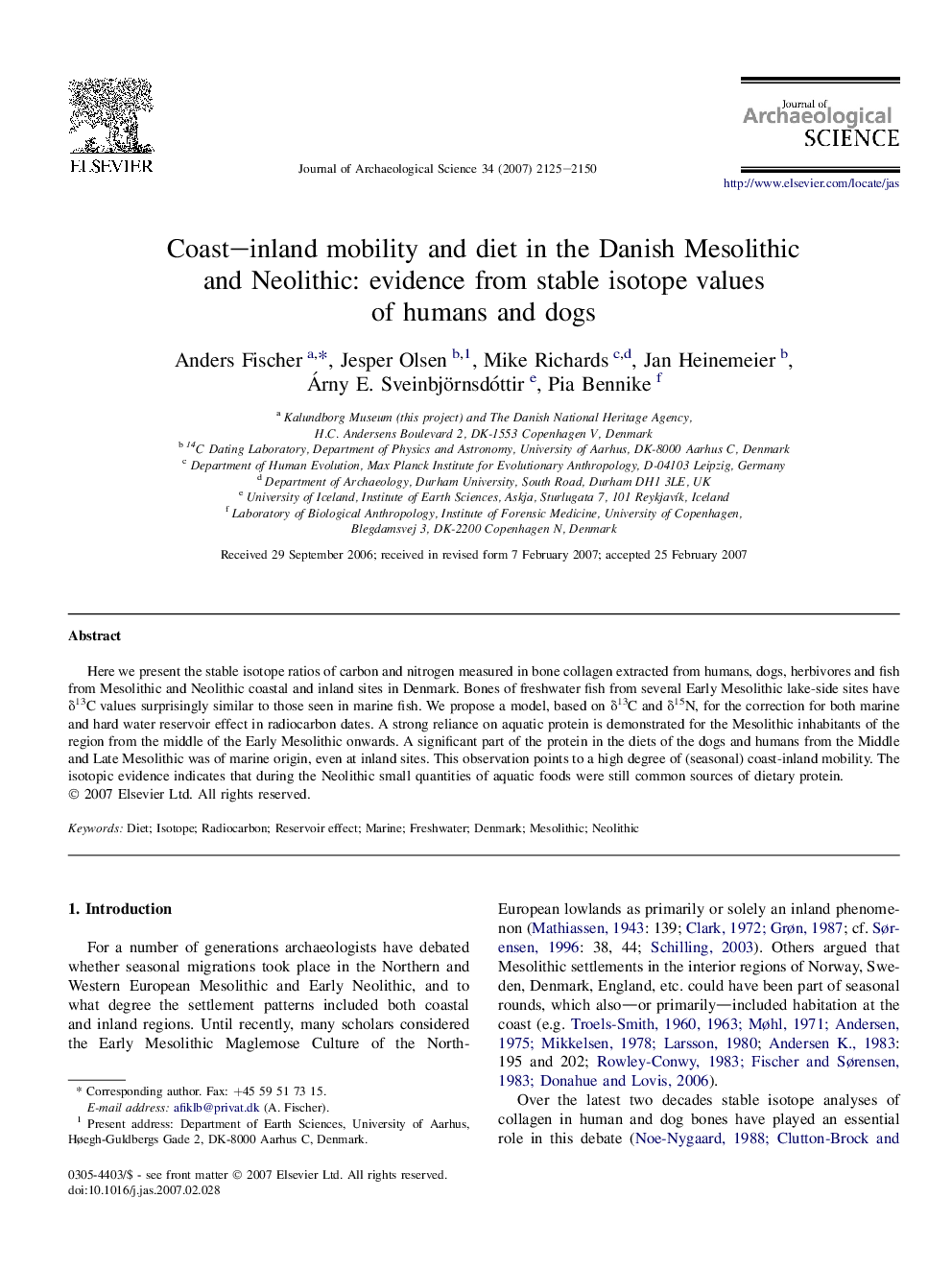| Article ID | Journal | Published Year | Pages | File Type |
|---|---|---|---|---|
| 1037236 | Journal of Archaeological Science | 2007 | 26 Pages |
Here we present the stable isotope ratios of carbon and nitrogen measured in bone collagen extracted from humans, dogs, herbivores and fish from Mesolithic and Neolithic coastal and inland sites in Denmark. Bones of freshwater fish from several Early Mesolithic lake-side sites have δ13C values surprisingly similar to those seen in marine fish. We propose a model, based on δ13C and δ15N, for the correction for both marine and hard water reservoir effect in radiocarbon dates. A strong reliance on aquatic protein is demonstrated for the Mesolithic inhabitants of the region from the middle of the Early Mesolithic onwards. A significant part of the protein in the diets of the dogs and humans from the Middle and Late Mesolithic was of marine origin, even at inland sites. This observation points to a high degree of (seasonal) coast-inland mobility. The isotopic evidence indicates that during the Neolithic small quantities of aquatic foods were still common sources of dietary protein.
